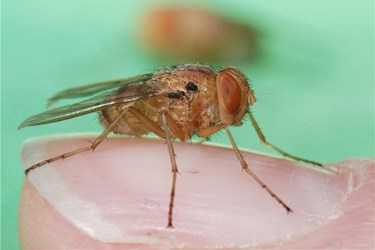Insect-Inspired Hearing Aids Aim To Eliminate Background Noise

Experts say that the next generation of hearing aids could be modeled after insects’ ears. A team of Scottish scientists is testing a new hearing aid design that can locate specific sounds and eliminate unwanted background noise, inspired by the way some insects hear sounds.
The National Institute on Deafness and Other Communication Disorders (NIDCD) estimates that 38 million Americans suffer from significant hearing loss, but only 30 percent use a hearing aid.
A 2013 study conducted in Finland surveyed 249 hearing aid users and found that a significant portion used their devices rarely or not at all. The researchers reported that typical reasons for noncompliance included “disturbing background noise” and “acoustic feedback problems.”
A recent press release from the University of Strathclyde claims that despite multiple advances in hearing aid structure and design, very few innovations have addressed the actual microphone. According to the release, microphone advances have been inhibited by cost and the size and power requirements of directional microphone technology.
Using $642,000 grant received from the Engineering and Physical Sciences Research Council, a team of researchers from the university and the Scottish Section of the MRC Institute of Hearing Research (IHR) has miniaturized a directional microphone that operates in ways similar to an insect’s ear.
“Currently, users can tell whether a sound source is in front of behind, but struggle to detect sounds from below or above, such as echoes in a large room,” said James Windmill, a professor from the Center for Ultrasonic Engineering at Strathclyde.
According to Windmill, the new microphone and design “will be able to evaluate the problems caused by distance from which a sound emanates, for example how to separate a sound from a loud source far away, like a train or plane, from a quiet sound from nearby, like a human voice.”
The research team is also using 3D printing techniques to identify a hearing aid design that will take full advantage of the improved microphone.
“These recent breakthroughs in microphones could revolutionize hearing-aid design and could result in real advances in the quality of support offered to those affected by hearing loss,” said Bill Whitmer, a scientist from the MRC/CSO IHR.
The team is not the only group of researchers taking hearing aid design cues from insects. Last year, the University of Texas, Austin introduced a piezoelectric hearing aid based on the ears of the Ormia Ochracea fly. The technology also allows users to focus on specific sounds with the added bonus of being battery-free.
Image credit: University of Strathclyde
